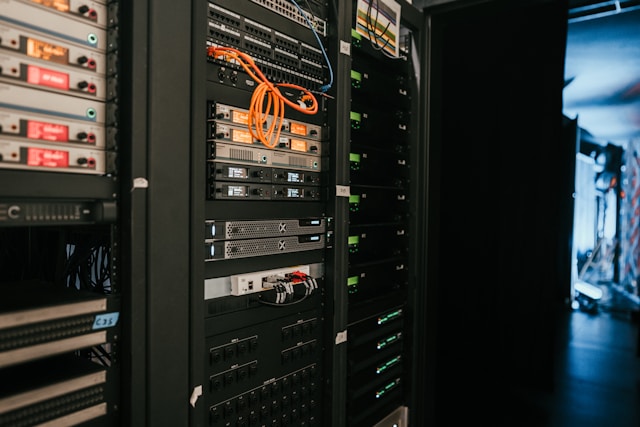
As demand for AI-powered computing surges across the United States, the electric grid is facing a form of stress it was never designed to withstand. In a new analysis, Amanda Simonian of TerraFlow Energy describes a rapidly changing landscape where data center volatility — not just demand — is becoming the defining grid challenge of the next decade.
Simonian, who spent September traveling between RE+ in Las Vegas, Climate Week NYC, Houston Energy & Climate Week, and Data Center World Power in San Antonio, said that despite the diversity of these events, one theme dominated every conversation: power quality and stability.

She writes that the new era of data centers — especially AI and high-density compute sites — is creating a problem the industry did not anticipate. “It is the problem no one planned for. As the next wave of data centers energizes, operators are discovering that the real challenge is not just finding enough megawatts. It is what happens when those megawatts do not stay still.”
Traditional enterprise data centers consumed relatively steady power. AI facilities do not.
Simonian explains that AI workloads behave erratically: surging, dropping, idling, and spiking thousands of times per second.
She notes: “AI workloads do not draw power the way traditional computing does. They surge. They idle. They fluctuate thousands of times a second, driving load profiles that look less like a flat demand curve and more like an EKG.”
This volatility overwhelms feeders, stresses transformers, disrupts frequency regulation, and increases forced outages — even when the total megawatt demand is technically available.
Recent analyses from federal and independent bodies echo these warnings. The North American Electric Reliability Corp. continues to highlight the challenges of AI campuses, crypto miners, hydrogen production loads, and hyperscale data clusters, particularly their:
While “the grid can handle large loads,” Simonian writes, “what it can’t handle… is a 300-MW campus that behaves like a strobe light, pulling hard one second and backing off the next.”
This behavior forces grid operators to deploy spinning reserves, initiate frequency control measures, or risk cascading reliability issues — all of which increase grid-wide operational costs.
Although engineers raised concerns years ago regarding harmonic distortion and ramp-rate limits, the industry underestimated just how quickly large-scale AI campuses would proliferate.
Simonian notes that construction timelines for new data facilities move much faster than utility planning cycles for transmission and distribution upgrades. The result is a mismatch between digital growth and electrical infrastructure capacity, creating what she describes as a “microgrid-level volatility problem” at every major campus.
Simonian states it plainly: “The truth is simple: every data center is about to play a role in grid stability, whether it wants to or not.”
This marks a major shift. Operators that historically focused only on uptime must now engage with concepts like:
Utilities are increasingly proposing interconnection requirements that make these functions mandatory, especially for campuses exceeding 100 MW.
While lithium-ion batteries are foundational for backup power and UPS systems, they are fundamentally unsuited for continuous charge/discharge cycling at the speed and scale needed to smooth AI-driven volatility.

As Simonian explains: “Lithium-ion, optimized for short discharges and limited duty cycles, was never designed to chase a data center’s power curve all day.”
Li-ion systems degrade quickly under high-frequency cycling, leading to shorter lifespan, safety risks, and increased replacement costs.
Long-duration flow batteries — like those developed by TerraFlow Energy — are uniquely capable of handling:
Simonian describes flow systems as operating more like an engine:
steady, durable, and capable of responding at millisecond speeds.
“Long-duration flow systems can sit quietly at the DC link, absorbing or releasing power in milliseconds to smooth out spikes before they ever reach the grid.”
Their ability to operate continuously without degradation allows them to serve as the bridge between UPS systems and utility-scale energy storage.
As the digital economy accelerates, data centers are being forced into a new role — one in which stability, not just uptime, will define performance.
“That is the next evolution of resilience: not just keeping servers online, but keeping the power around them steady.”
In the coming years, permitting and interconnection agreements will likely require:
Data centers that adopt these technologies early will gain faster approvals, more reliable power supply, and better energy cost control.
Simonian concludes with a message that doubles as both prediction and warning:
“The grid of the future will not be built around data centers. It will be built with them. And the ones that understand that first will define how the next decade of digital growth actually stays online.”
Originally reported by Amanda Simonian in Construction Dive.